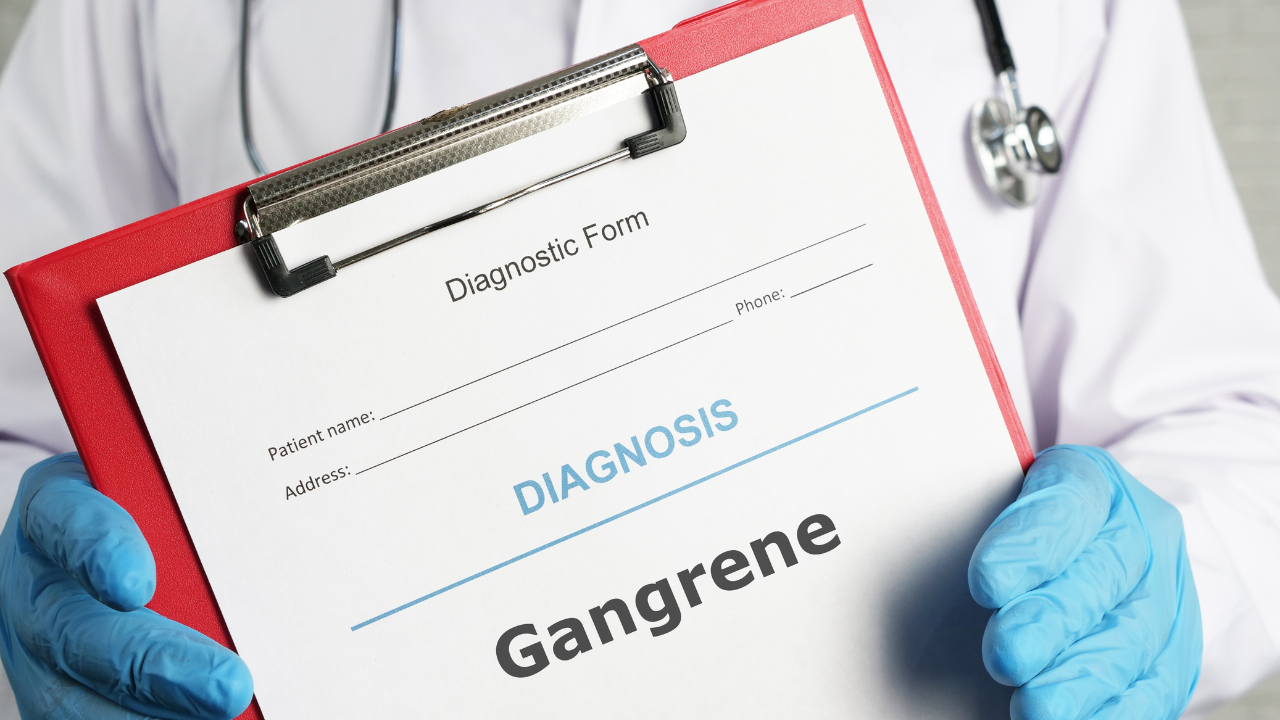-
news
-
Health
Is that wound not healing? You may suffer from gangrene
Wounds that do not heal may indicate gangrene, a serious condition caused by tissue death due to poor oxygen and blood flow. Early diagnosis and treatment are important to prevent complications such as amputation.

Image – Canva
non-healing wounds Often indicate underlying health concerns that require immediate attention. A persistent wound that does not heal within a few weeks may indicate DepressionA condition caused by the death of tissues due to decreased blood flow and oxygen supply. is common in people with diabetesGangrene in people with high blood pressure, high cholesterol, or who smoke requires early detection and immediate action Treatment To avoid serious complications like amputations,
Below, we look at the reasons, symptomsAnd the treatment of gangrene with insights from medical experts.
What is gangrene?
According to Dr. Tapish Sahu, HOD, Vascular and Endovascular Surgery, Manipal Hospital, Dwarka, New Delhi, gangrene occurs when tissues die due to inadequate oxygen delivery. often results in atherosclerosisWhere plaque accumulates in the arteries, causing blood flow to slow down.
“This causes the affected area to turn black tissue deathAnd if not addressed immediately, it can lead to serious complications,” explains Dr Sahu. He says that while other causes of non-healing wounds exist, accurate diagnosis of arterial gangrene requires a Doppler test or CT scan. “Timely intervention is important to prevent amputation,” he adds.
Causes and risk factors
Dr Saurabh Juneja, Director and Head of the Department of CTVS at the Indian Spinal Injuries Centre, elaborates on the various causes of non-healing ulcers that may progress to gangrene.
These include:
- Diabetes: Causes diabetic foot ulcers.
- Venous insufficiency: cause of venous ulcers.
- peripheral artery disease: Resulting in arterial ulcers.
- Pressure ulcers: Commonly known as bedsores.
- Other factors: autoimmune diseases, infections and nutritional deficiencies.
recognizing symptoms
Dr. Juneja lists the key symptoms that may indicate gangrene:
- Persistent pain or discomfort.
- Odor or discharge from the wound.
- Black, necrotic tissue.
- Swelling, redness, or warmth around the ulcer.
- Systemic symptoms such as fever, chills or malaise.
treatment approaches
Treatment of gangrene and non-healing ulcers varies depending on the cause. Dr. Juneja outlines the following strategies:
- Regular cleaning and clearing of debris.
- Antibiotics for infection.
- Strict glucose control for diabetics.
- Compression therapy for venous ulcers.
- Revascularization surgery for arterial ulcers.
- Ensuring adequate intake of proteins, vitamins and minerals.
Dr. Sahu emphasizes the importance of early diagnosis. “The sooner we identify the root cause, the better the chances of avoiding serious consequences such as amputation,” he says.
prevention
Preventive measures are important to manage the risk of gangrene. Regular skin inspection, especially in high-risk areas, can help identify early signs of ulcers. Maintaining proper hygiene, managing underlying health conditions like diabetes, and seeking medical attention for persistent wounds are important steps.
In conclusion, gangrene is a serious but preventable condition if addressed promptly. By understanding the causes, recognizing the symptoms, and following recommended treatments and preventive measures, individuals can significantly reduce the risk of serious complications.
Get the latest news live on Times Now with breaking news and top headlines from around the world.
diabetes


